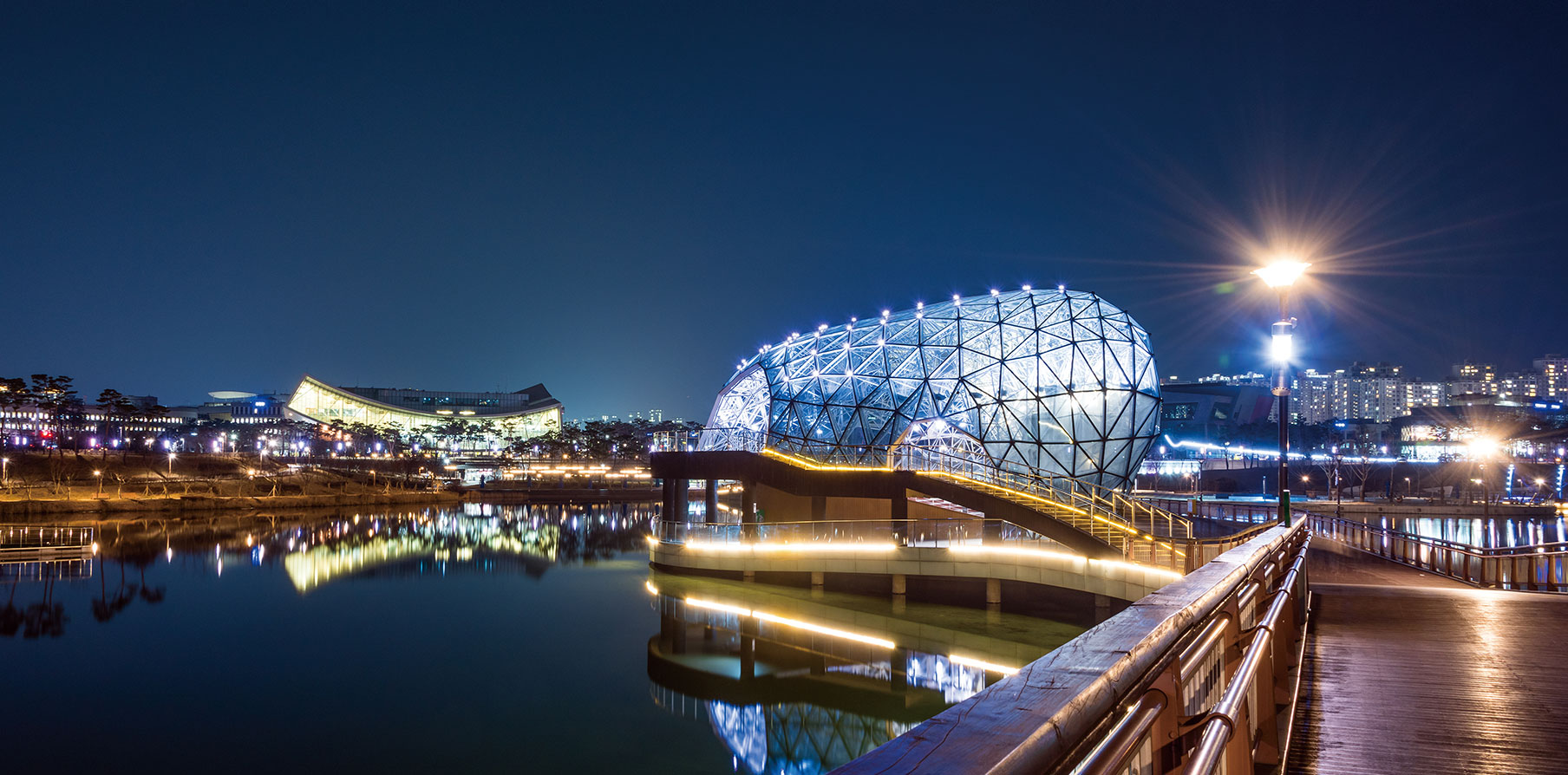Travel
Innovative Capital
Sejong
Sejong Special Self-governing City was founded in 2007 but major government agencies began moving there five years later. Nestled smack in the middle of the Korean Peninsula, the national administrative capital has achieved rapid urban development in taking pressure off the Seoul metropolitan region, which is home to half the national population. In doing so, Sejong has turned into a city with a relatively young population, innovative architecture and an emphasis on urban-natural balance.
Written & Photographed by• Cho Yongsik
More than just a national administrative capital and a means of decentralization, Sejong has emerged as a prime venue and testing ground for the harmonious cohabitation of humanity and nature.
Rich Historical Background
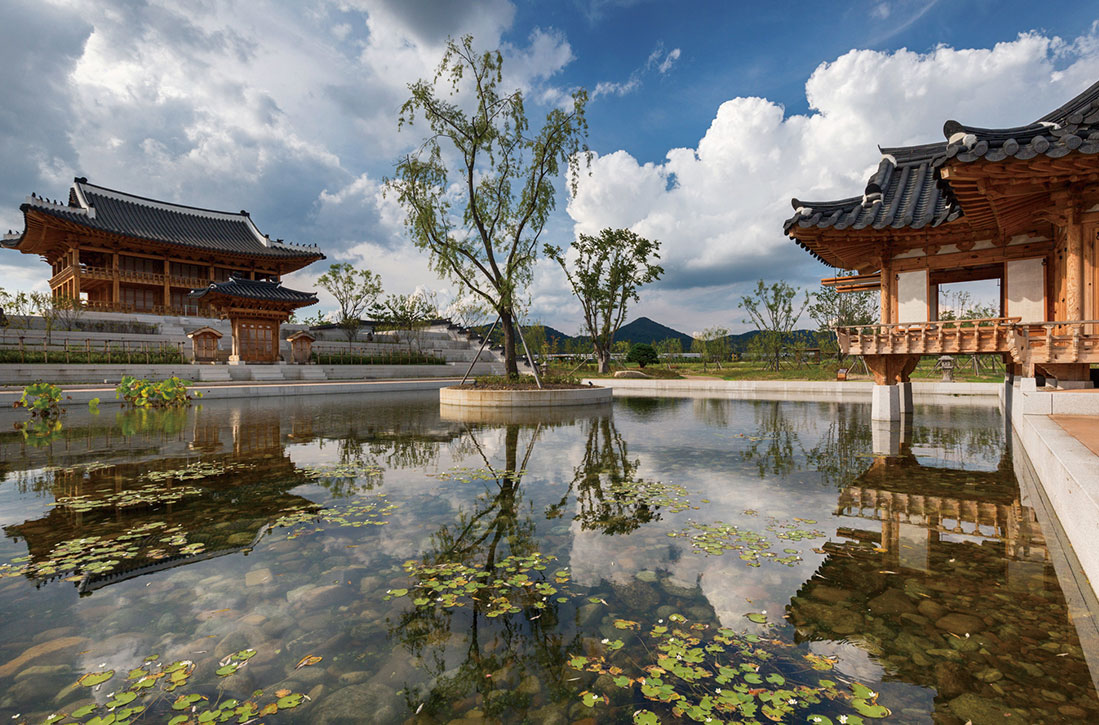
The temple compound houses a clear pond that glistens under sunlight. © Sejong Nat’l Arboretum
Climbing Unjusan Mountain, the highest point in Sejong at 460 m, begins at the Buddhist temple of Gosansa, which honors the spirit of King Euija, the last monarch of the Baekje Kingdom (18 B.C.-A.D. 475) and his army who sacrificed their lives fighting for their empire. Strolling around the temple compound leads to Unjusanseong Fortress. The fortress is said to have originally consisted of an inner fortress 543 m long within a 3-km outer fortress, but only the outer structure remains through partial restoration. The inner compound houses buildings, earthenware from the Baekje and Silla (57 B.C.-A.D. 935) kingdoms, and giwa (roofing material) scraps from the Goryeo (935-1392) and Joseon (1392-1910) dynasties.
Positioned between the provinces of Chungcheongnam-do and Chungcheong- buk-do, Sejong is located atop the nation’s No. 5 metropolis Daejeon. Named after the most revered monarch in Korean history, Sejong the Great, the city uses Korean names for many of its topographic sites. All administrative regions, roads and apartment complex names are in Korean to honor Sejong’s invention of Hangeul, the Korean alphabet.
On the way to Sejong, stopping by the village of Geumsa-ri is recommended. Cited for its high-quality buncheong (traditional stoneware) and porcelain production, the site is packed with kilns and thus Geumsa-ri is dubbed a ceramics village. The site is now home to Sejong Folk Museum, where the history of regional and topographic development is displayed through cultural assets, folk relics and other memorabilia. The museum was opened in 2012 in a former elementary school.

Sejong is home to the nation’s first national urban arboretum. © Sejong Nat’l Arboretum / Harmonious coexistence between technology and nature requires innovative transportation modes.
Youthful Energy
Because Sejong is a relatively new city built in 2007, the average age of a resident was 36.7 as of last year, with the population rising 8.4% annually. These stats led to the projection that even in 2050, Sejong will remain the nation’s youngest city, and perhaps for that reason, the liveliest. The major residential divisions are distinguished by function, with Living Area 1 for government administration and the others for R&D, smart city, culture, textiles and clothing, and industrial innovation.
If Unjusan Mountain is steeped in ancient history, Jeonwolsan Mountain reflects living history. With a peak of a mere 260 m that requires an hour-long climb, Jeonwolsan caters to those yearning for a quick and easy trip to nature with a panoramic vista of Sejong that includes the Geumgang River, Government Complex Sejong and Central Open Space. This is why photographers nationwide flock to snap at this scenic spot.
Milmaru Observatory, located in the heart of the city, is now surrounded by tall apartment structures but still boasts a great view. Opened in 2009, the observatory has free admission.
“Sejong has emerged as a prime venue and testing ground
for the harmonious cohabitation of humanity and nature.”
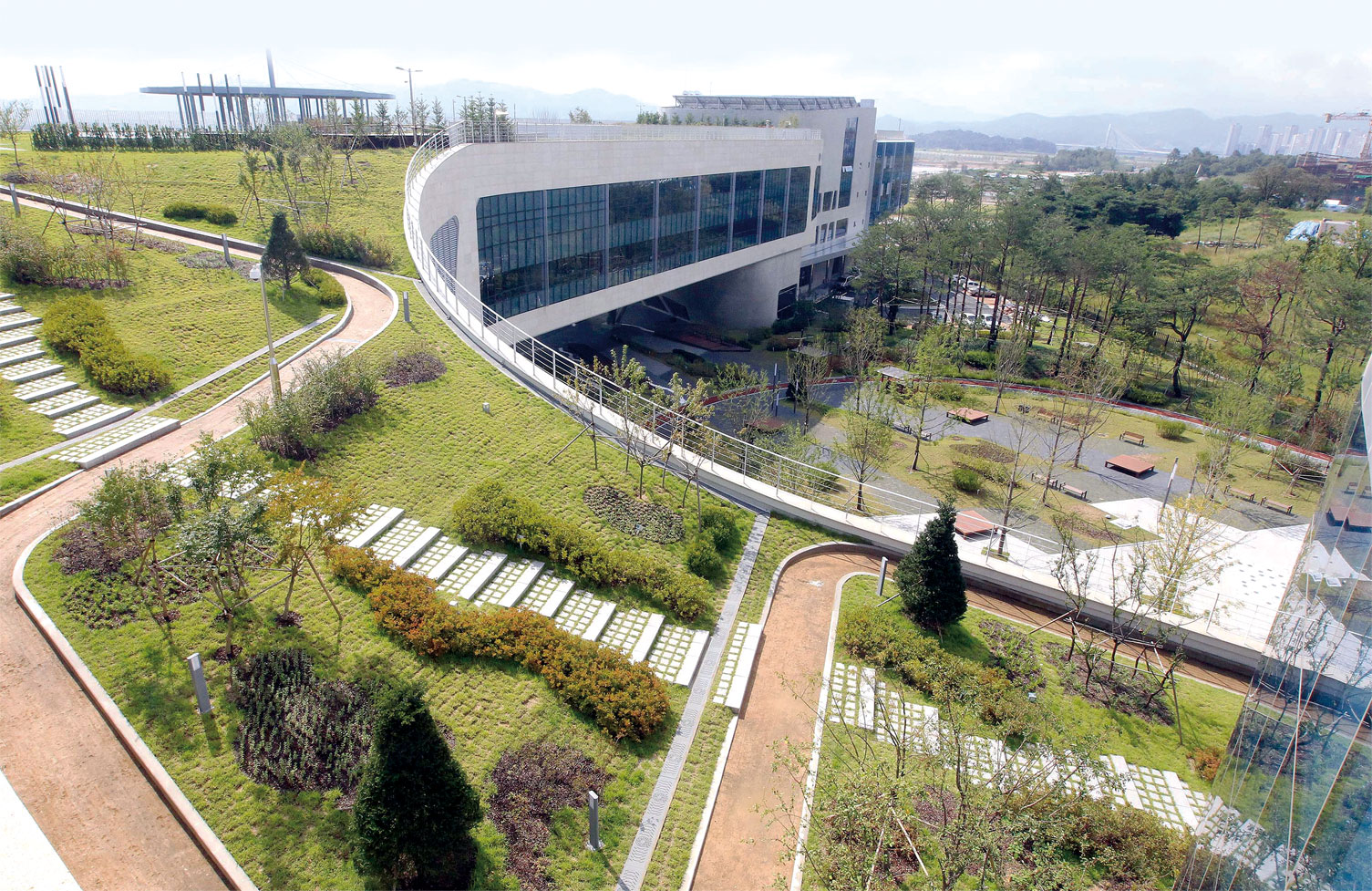
Government Complex-Sejong hosts a uniquely designed rooftop that teems with flora. © Yonhap News
Balanced by Nature
One of Sejong’s greatest charms is its eco-friendliness. Since cars powered by either hydrogen fuel cells or electricity are commonplace, most parking lots have vehicle charging stations. Public transportation also boasts stellar infrastructure designed for maximal convenience and mobility. Solar power-generating facilities are installed throughout the city. Altogether, the city operates 13 corporate photovoltaic stations that effectively lessen CO2 emissions by 20,200 tons.
Opened on Oct. 18, Sejong National Arboretum, the country’s first urban national arboretum and largest exhibition glasshouse, is another manifestation of the future urban planners envisioned for the city. As big as 90 soccer fields, this facility is decked out with 2,400 species of flora from the world over, with over 1.1 million plants. Traditional gardens offer exotic sights including bonsai collections available year-round.
Under a drive to build the city more esthetically pleasing, Government Complex Sejong ditched the mundane aura of public agencies through innovative architectural and spatial design and arrangement. Its topmost garden is the world’s largest of its kind, listed on the Guinness Book of Records at 3.6 km long. An estimated 1.08 million plants have been on display since 2014, though visitation is limited due to COVID-19.
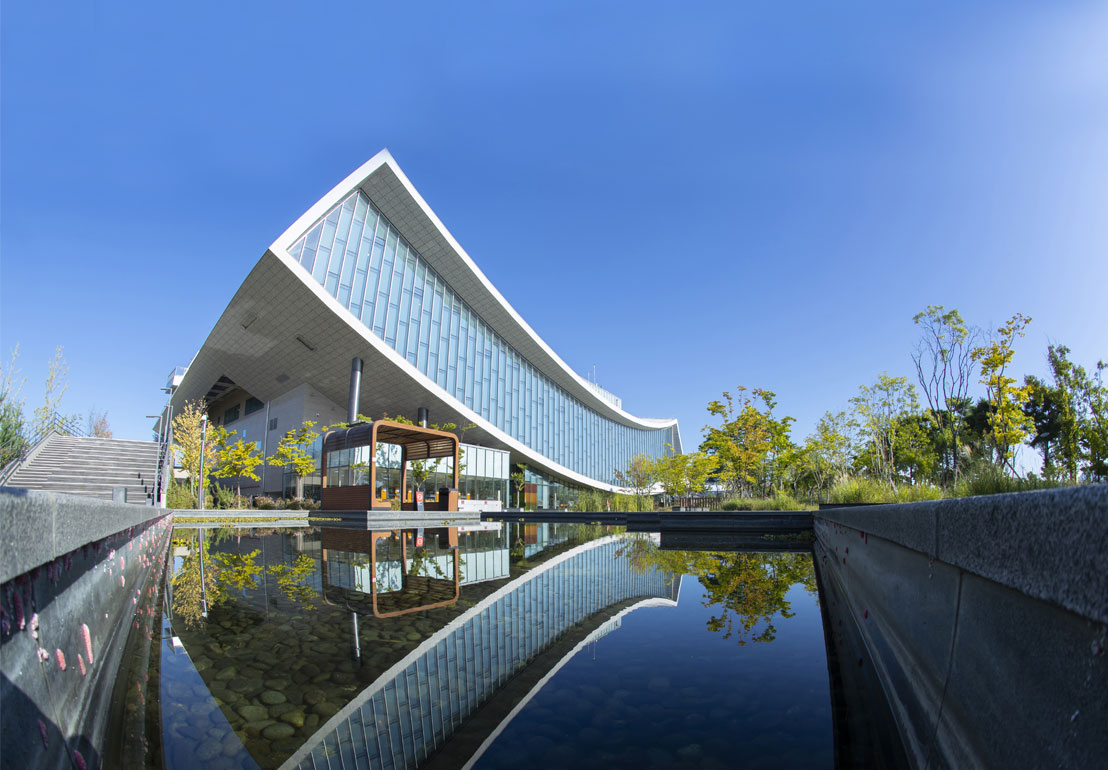
Municipal facilities like the government complex and the National Library of Korea surround Sejong Lake Park. © imagetoday
Leisure and Relaxation
Sejong Lake Park has the nation’s largest artificial lake and is frequented by picnickers day and night. The glistening night view of the lake at sundown attracts hordes of visitors. By sundown, the glistening night views of the lake are so gorgeous that it has been handpicked by the 5th Korea International Tourism Show for recognition of its scenic twilight. Five islands dubbed Water Bloom, Marsh, Festival, Stage and Water Leisure offer eclectic scenery, while Eunbit (Silverlight) Beach offers a plethora of summer activities. Rubber boats, water bicycles and kayaks make the area a prime leisure resort.
Near this park are major municipal facilities like the government complex, where the Nat’l Library of Korea, Sejong, the first national library to be operated by a provincial area, can be found with a remarkable exterior. Its shape is known to represent a bowl or quasi-metaphorical ‘plate of wisdom.’
Since opening in 2013, the facility has attracted more visitors especially families as a city landmark for cultural enrichment. Due to COVID-19, reservations are needed to visit, and reader-oriented activities like book talks and seminars have also gone online.
The cable-stayed and road Handuri Bridge is the final destination of the Sejong tour. Shaped like a sailboat racing across the Geumgang River, the bridge often sees leisure cyclists crossing.
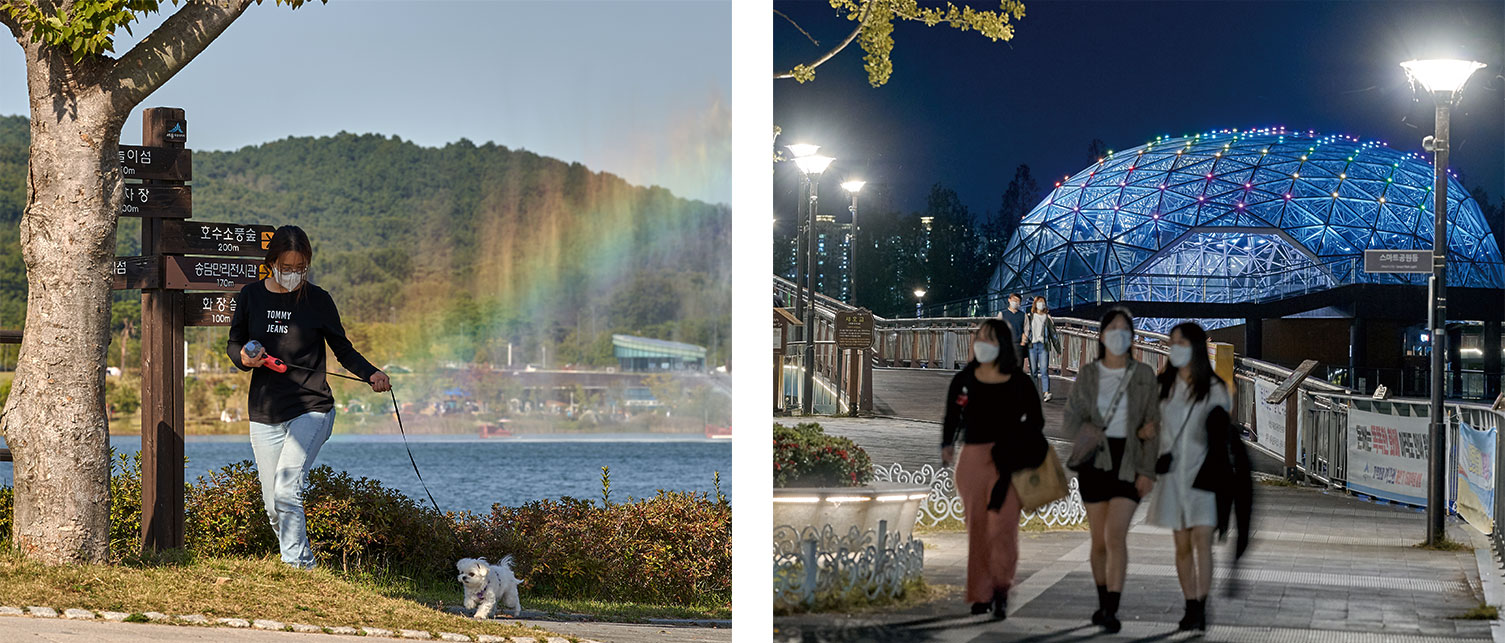
A leisurely lakeside stroll is a great way to take in the park’s nature. / Handuri Bridge glimmers at dusk.

